Easy to plan, economical and rewarding—these are only some of the benefits of a trip featuring a Spanish language school and homestay. While you acquire new and useful language skills, you make connections with residents of your destination and fellow students from around the world. You come to know your location like an insider, with experiences not available to the average tourist.
While schools easily accommodate groups and couples, this kind of trip can be an especially satisfying option if you are travel on your own or with children. The school provides the solo traveler with an instant circle of acquaintances; and for a family, taking advantage of a homestay can be less expensive, more flexible and convenient than a hotel. All travelers will enjoy the added benefit of gaining deep, long-lasting cultural experiences
I am a Spanish language instructor, and in the last 20 years I’ve taken small groups of my adult students to different schools in Mexico, Costa Rica and Spain, often with children and/or spouses in tow. Each trip has been remarkable and I remember each location with warm feelings.
At one time these independent language institutes were located only in capital cities, but now they can be found throughout Latin America and Spain—in cities small and large, as well as beach towns and mountain villages. Depending on the location, the classes with activities and homestay (typically including one or two meals per day), run from around $260 to $800 per person a week.
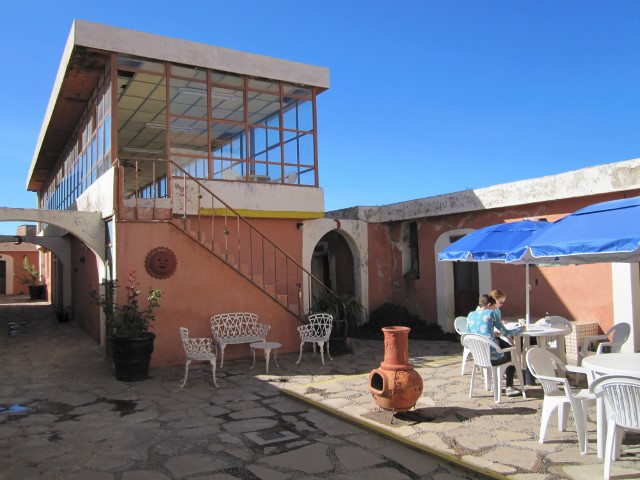
Fenix Language Institute, Zacatecas, Mexico. (Photo courtesy Beth Werber.)
Attend Classes, Enjoy the Sites
What is school like? Classes may be held in a downtown building or perhaps in a large suburban house converted into a school. Generally, students study three or four hours in the morning. Class size tends to be small: one to ten students. Additional or specialized classes can be added for an extra fee. Many schools will provide instruction for children. Some offer parent-and-child classes. In the afternoon and evening there may be outings with other students—to have a beer and listen to a weekly street concert, visit a museum, go on a guided history walk. Or you may take a class on wine tasting, cooking, a local craft, or dance: salsa or flamenco. The school will post a weekly schedule of activities and enrichment classes, the cost of which is included in your tuition. Volunteer opportunities in the community are sometimes available. The school may organize weekend trips for an extra fee.
Many schools will pick you up at the airport or bus station and take you to your homestay. But this is not a package tour, so a certain amount of self-sufficiency is required. Because you are arranging the visit on your own, individual needs can usually be accommodated. And since you’re not tied into any itinerary, it is easy to travel on to other destinations, informed by your newly acquired language skills and local recommendations.
The quality of the classes varies with the teacher and school. All schools feature instructors who are college graduates, although their major may have been in chemistry or some other unrelated field. In Spain, however, the teachers will have a degree in the teaching of Spanish as a second language. Whatever the expertise of the teachers, attending a school provides a grounding in the culture.
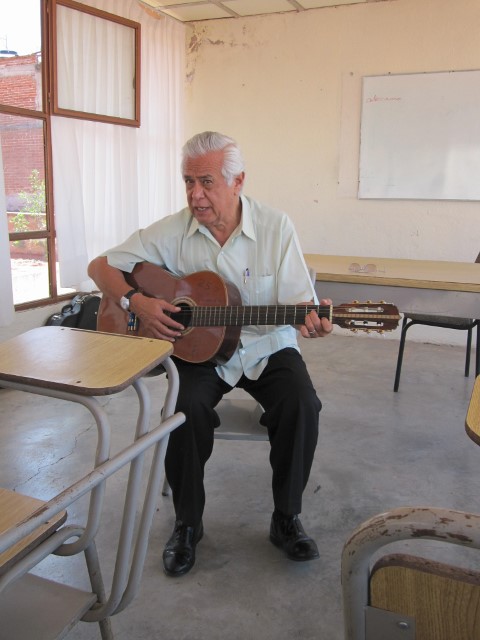
Arturo Dorado, founder of Feniz Language Institute in Zacatecas, uses music to teach language and culture. (Photo Beth Werber.)
As you follow the local schedule, taking the bus in the morning with people going to work for example, you will get a taste of the local life style, and the school serves as a resource for better understanding what is going on around you.
The school staff is important, but your fellow students can be an added bonus. You’ll find them at least as fascinating as yourself: an American nun from Iowa brushing up her language skills to work with migrant children, a German businessman working for a multinational company, an Irish diplomat preparing for a post in Mexico City. Fellow students will be from many walks of life—students, artists, engineers, retirees, health-care workers—from all over the world.
A school with ties to an American University may be appealing if you enjoy the energy of young high school and college students. The smaller schools that do not offer classes for credit are likely to have a more mature and international student body.
Homestays Provide a Unique Experience
As helpful as the language classes are, what makes the experience is the homestay. Typically you have a private room and bath in a middle- to upper-middle class home and share one or two meals a day with your hosts. The school will arrange this and pick a household that meets your needs and preferences. The homestay is not mandatory; some students opt to stay in a hotel or rent an apartment through a website.
The classes and homestay are priced separately, but with the school paying the family. You can request a home with children or without, smoking or non-, with pets or without. The household may turn out to be more of a rooming house for university students—not ideal—but at the opposite end of the range of possibilities may be a family who takes you in like an adult exchange student. Most of the time your home is like a private bed and breakfast. Many of the host families are headed by women who are widowed or divorced; it is a way to supplement their income. In our various trips, each homestay has been positive and memorable.
Another benefit for travelers is that this kind of trip offers the security of knowing that the school and the family are looking out for you. They’ll let you know what is safe and what is not, and if there is an emergency, the school will, in all likelihood, help out. In addition, you have the acquaintanceship and companionship of staff, family and fellow students.
In Heredia, Costa Rica, our homestay family had an annoying little dog and the boys were addicted to video games, but the mother was an exceptional cook who took pride in using fresh ingredients. The instructor of the salsa dance class at that school was upbeat and accomplished.
And the school had a lovely garden complete with its own toucan. The school organized a trip to Manuel Antonio National Park, a pristine beach reached by wading through a stream. We saw sloths, and I had a run in with a monkey who tried to steal my daughters Cheetos. We also went on a school trip to see the volcano Poás, but as we say in the Northwest of the United States, the mountain wasn’t out that day. The school arranged a visit to a local maternity clinic for the midwife and nurse in our group, and our family arranged a visit to a nearby elementary school for my daughter and me.
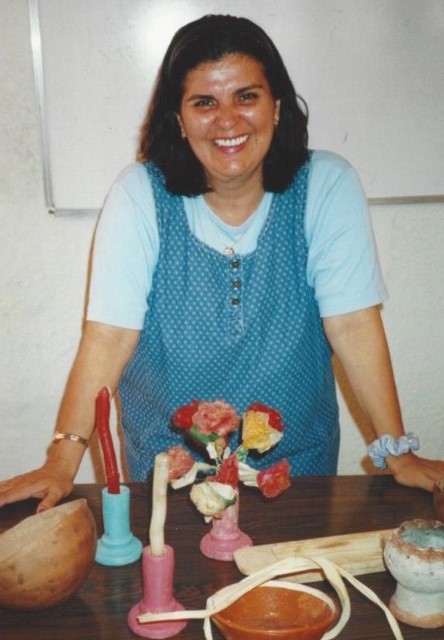
Lucelly Munoz Castillo teaches about Day of the Dead in Yucatan (Photo courtesy Debbie Helgerson.)
In Mérida, Yucatán, a little house gecko lived on our bedroom ceiling and ate mosquitos, and a Mayan teacher, Lucelly Munoz Castillo, taught us all about Day of the Dead, Mayan style.
Our family took us to the beach at nearby Progreso. The city offers cultural presentations in the city square every evening, and so was a favorite evening activity for the students.
We took a day Eco tour to the Celestún Biosphere Reserve (pink flamencos) and several students played hooky to experience the astonishing Mayan archeological site of Chichén Itzá on the spring equinox.

Instituto de Espanol Moderno, Merida, Yucatan (Photo Debbie Helgerson)
In Nerja, Spain, on the Mediterranean Coast, we sat around the kitchen table with an electric blanket for a table cloth—a handy way to keep warm on a chilly evening, and much simpler than the traditional brazier under the table. My daughter and the little boy of the house played Monopoly. The class on Spanish wines was delicious as well as informative, and the flamenco dance class was a fun challenge. A visit to the nearby caverns was a big hit. From there we made a trip to Granada and in addition to seeing the Alhambra, we experienced Holy Week processions.
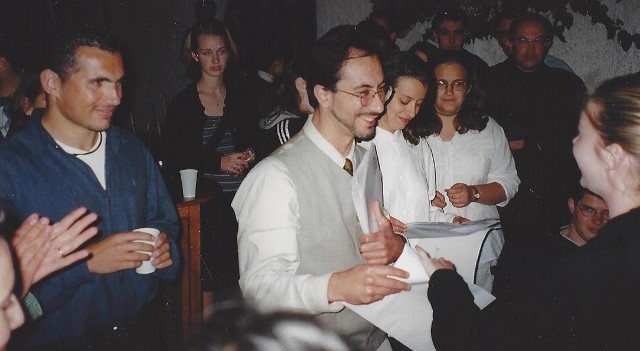
Escuala de Idiomas, Nerja, Spain (Photo Debbie Helgerson)
In Guanajuato, our plucky host mother was helping advance her family in difficult financial times by hosting foreign students and sometimes by selling clothes in the market. She graciously accommodated my family’s vegetarian proclivities. The school had the most knowledgeable history teacher I’ve ever met.
In Zacatecas, the teenage daughters instigated a trip to a discotheque at the bottom of a closed silver mine—2000 feet down. Every afternoon our class visited a different museum, each more fascinating than the day before. Our family also took us to see the parade accompanying the International Folkdance Festival. And in the evening from our upstairs balcony, we could hear the traditional musical processions the city is known for. In the cooking class I learned my favorite recipe for enchilada sauce. Our hostess, a middle-school teacher on vacation, was most generous with her time.
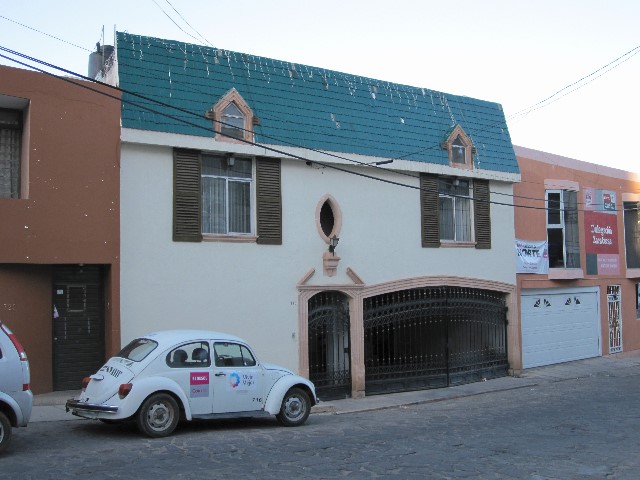
A homestay home in Zacatecas, Mexico. (Photo Beth Werber.)
Zacatecas has more people living in the U.S. than in the Mexican state, and we met a friend of the family who travels to the U.S. every summer to teach Mexican folk dance and music to immigrant children so that they can keep in touch with their home culture. The daughter of the house helped arrange an interview with a Franciscan monk for research my daughter was doing, and the family friend arranged for an interview with a nun of the Order of St. Clare.
Reasonable Prices, Invaluable Cultural Experiences
So step away from the tour bus and the resort hotels. Attend a language school. Live with a family. Learn Spanish. Meet interesting people, eat well, and get to know your destination like a native. At a very reasonable price, you can have a vacation you’ll never forget.
The following is a sampling of schools my students or I have visited and recommend, most within the last five years. Visit the school websites, contact them for more information as needed, and find the best fit for your needs.
ARGENTINA
- Buenos Aires, Spanish School Amauta, https://www.amautaspanish.com
COLOMBIA
- Bogotá, Nueva Lengua, https://www.nuevalengua.com
MEXICO
- Guanajuato, Escuela Mexicana, https://www.escuelamexicana.com
- Guanajuato, Escuela Falcón, https://escuelafalcon.com
- Mérida, Yucatán, Institute of Modern Spanish, https://www.modernspanish.com
- Oaxaca, Becari Language School, https://www.becari.com.mx
- Oaxaca, Instituto Cultural de Oaxaca, https://www.icomexico.com
- Oaxaca, Oaxaca Spanish Magic, https://www.oaxacaspanishmagic.com
- Oaxaca, Solexico, https://www.solexico.com
- San Francisco, Nayarit, San Pancho Language School, https://www.sanpanchospanish.com
- Zacatecas, Instituto Fénix (currently open for online classes only) , https://www.fenixlanguageinstitute.com
PERU
- Lima, Ecela Lima, https://ecelaspanish.com/spanish-school-lima-peru
SPAIN
- Nerja, Escuela de Idiomas, https://www.idnerja.com
On Our Site:
- Homestays in Portugal: A Great Option for Travelers
- What to Do With a Weekend in Seville
- How to Spend Three Days in Madrid
- A Flamenco Experience in Granada, Spain
-Cover photo of Fenix Language Insitute, Zacatecas, Mexico, courtesy Beth Werber.

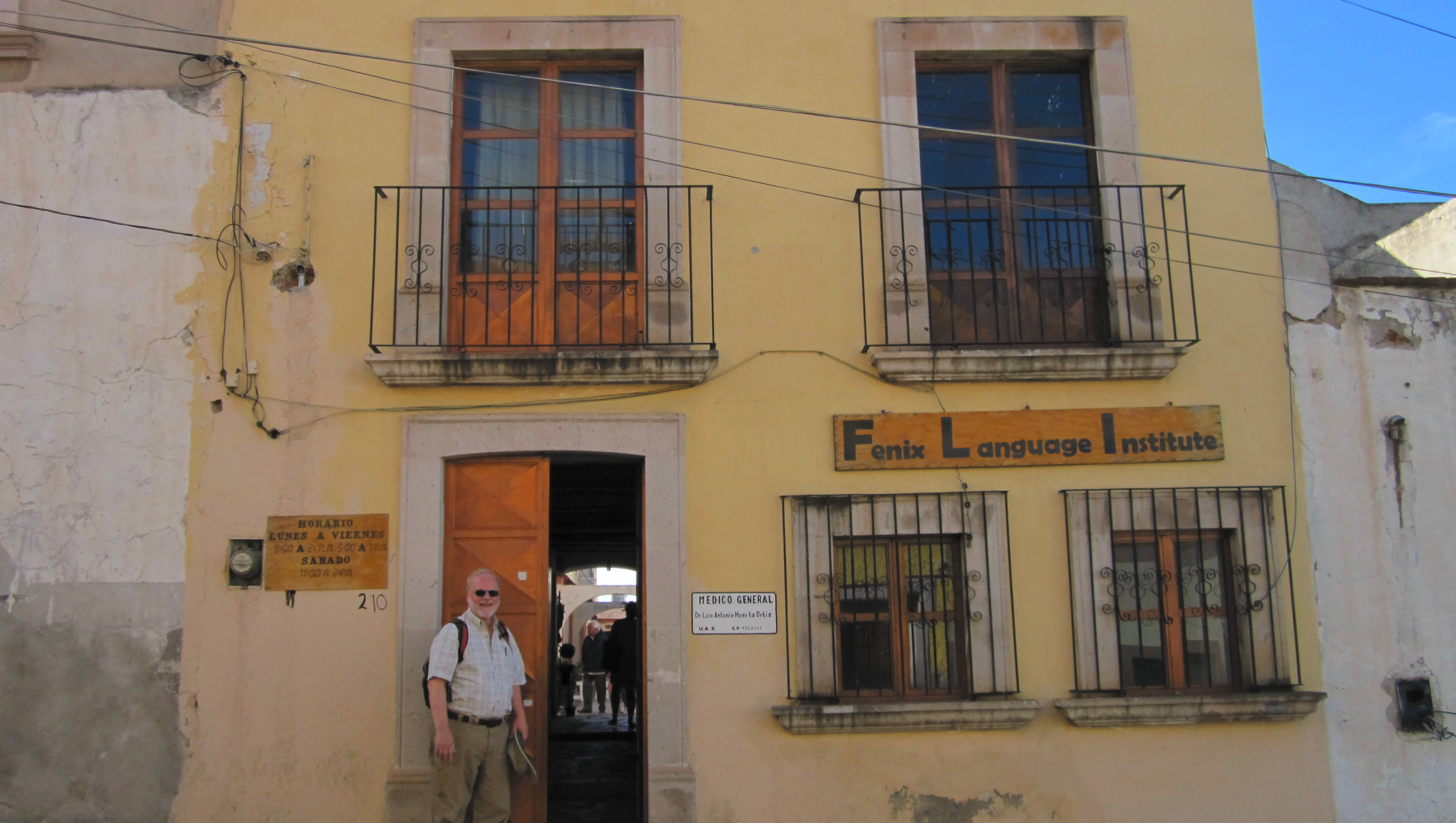

3 comments
Great times on these trips Leslie. My observation is that being relaxed and flexible helps the student have a more enjoyable time. All of my housing situations were great. Loved doing this, and I think it made me a better traveler. Thanks
So glad you’ve enjoyed traveling with Leslie, Mike. And, of course, I agree with your travel philosophy!
Howdy! This blog post could not be written much better! Reading through this post reminds me of my previous roommate! He constantly kept preaching about this. I’ll forward this post to him. Pretty sure he’s going to have a good read. I appreciate you for sharing!|